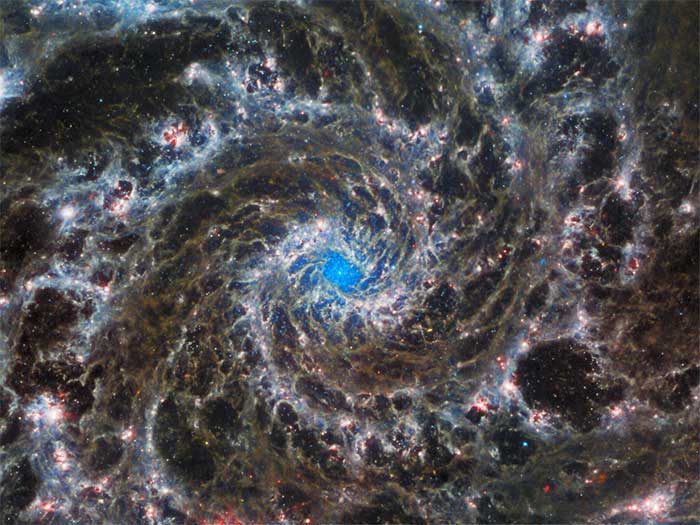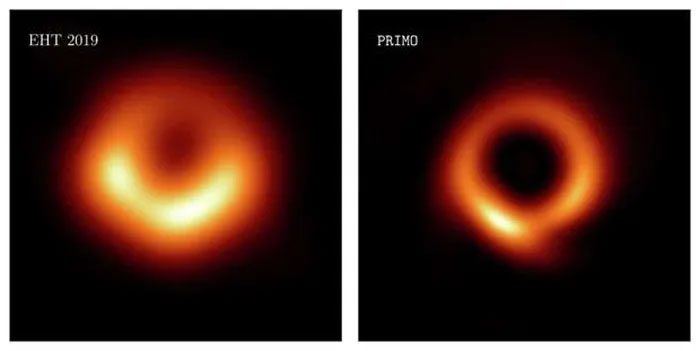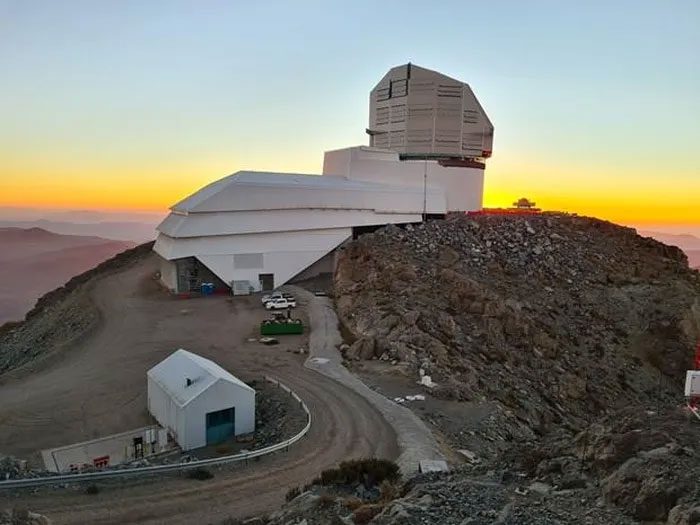Humans have always yearned to understand the origins and mysteries of the universe. With the rapid development of artificial intelligence (AI), it may change the way humans interact with the cosmos.
Astronomy is the science that seeks to identify patterns in the universe by sifting through vast amounts of data, making serendipitous discoveries, and establishing strong connections between theory and observation.

Image captured by the James Webb Space Telescope showing the center of M74, a spiral galaxy located 32 million light-years from Earth, containing about 100 billion stars. (Photo: AFP/TTXVN).
These are areas where artificial intelligence (AI) can significantly advance astronomy.
Astronomers often utilize artificial neural networks, where software learns all the connections within a training dataset and then applies that knowledge to real-world data.
For example, the processing of data: the stunning images released online by the Hubble Space Telescope or the James Webb Space Telescope differ significantly from the first images captured by those instruments.
Raw astronomical images are often full of errors, with cluttered backgrounds, contaminating impurities, and noise. Processing and cleaning these images to create a complete picture—useful for scientific research—requires enormous effort, often done partly manually and partly through automated systems.
Today, astronomers are increasingly applying AI features in data processing, removing unnecessary parts of images to produce clearer visuals.
For instance, the image of the supermassive black hole in the center of Messier 87 (M87) was first published in 2019 and was “transformed” by AI in April 2023, providing a much clearer image of this black hole’s structure.

Image of the black hole published in 2019 (left) and the AI-enhanced image from 2023. (Source: AP).
In another example, some astronomers input images of galaxies into an artificial neural network algorithm, guiding the algorithm with classification schemes of known galaxies.
Current classifications are primarily performed manually by researchers themselves.
Once the training is ready, the artificial neural network can then be applied to real data, automatically classifying galaxies, which is much faster and less prone to error than manual work.
Astronomers can also use AI to eliminate optical noise caused by Earth’s atmosphere in space images captured by ground-based telescopes.
AI is even proposed to assist humans in detecting signs of life on Mars, understanding why the Sun’s corona is so hot, or revealing the ages of stars.
Astronomers are also employing artificial neural networks for deeper research, exploring the fundamental nature of the universe.
Two of the greatest mysteries of the universe are the identification of dark matter and dark energy, two substances that lie beyond current human physical knowledge, together accounting for over 95% of the total energy in the universe.
To help identify those strange substances, cosmologists are striving to measure their properties: how much dark matter and dark energy exists and how they have changed throughout the history of the universe.
Minor changes in the properties of dark matter and dark energy can profoundly impact the universe’s formation history, affecting everything from the arrangement of galaxies to the rate of star formation within galaxies.
Artificial neural networks are assisting cosmologists in addressing the myriad effects of dark matter and dark energy.
In this case, training data is obtained from complex computer simulations. In those simulations, cosmologists alter the properties of dark matter and dark energy and observe what changes.
They then input those results into the neural network to explore all the intriguing ways the universe varies.
While not fully ready yet, there is hope that cosmologists can direct the neural networks toward real observations and help humans understand what the universe is made of.

The Vera C. Rubin Observatory is under construction in Chile. (Source: NSF).
Such approaches are becoming increasingly important as modern astronomical observatories capture massive amounts of data.
The Vera C. Rubin Observatory, currently being built in Chile, will provide more than 60 petabytes (one petabyte equals 1,000 terabytes) of raw data in the form of high-resolution images of the universe.
Analyzing this enormous amount of data would be impossible if done manually. Only computers, supported by AI, can accomplish the task.
A particular focus for upcoming observatories will be on searching for surprises.
For example, astronomer William Herschel serendipitously discovered Uranus during a routine survey of the night sky.
AI could be used to flag and report potential objects by identifying anything that does not fit established patterns.
In fact, astronomers have already used AI to detect a potentially hazardous asteroid using an algorithm specifically written for the Vera C. Rubin Observatory.
In the future, who knows what discoveries about the universe humanity will owe to a machine?





















































